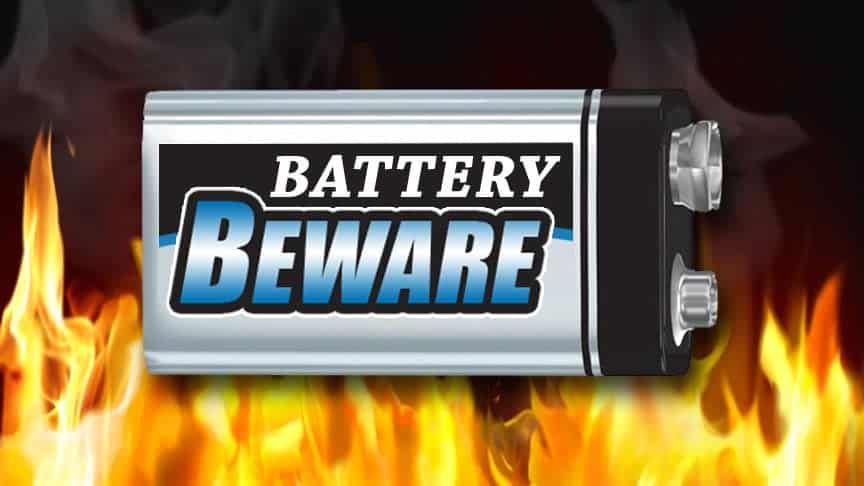It’s that time of year when that favorite Christmas gift or toy needs a battery. Batteries are widely used in a variety of devices and because they are so common, people may not be aware of some dangers they may be exposed to when handling certain types of batteries. Two immediate dangers are:
1. Fire or explosion due to a short circuit or improper charging and
2. Leakage of corrosive liquid.
Other dangers include the release of toxic materials into the environment if not disposed of properly. A battery has two (or more) terminals to deliver power to the device and if these terminals become connected (shorted out) via a material with low resistance (e.g. a piece of metal) then a very large current can flow between the terminals and a lot of heat is generated within the battery. A short may also occur inside the battery due to manufacturing defects or physical damage to the cell. In both cases (external or internal short), the battery can get very hot and may catch fire and explode.
Even small batteries can contain a lot of energy and if this is released quickly due to a short circuit, a lot of heat may be produced which generates gas that may include hydrogen (highly flammable).
A fire occurred in the back of a University of Alberta truck returning from a field site. The fire appeared to have started in a bag/box of various batteries and was likely caused by a 9-volt alkaline battery shorting out on some piece of metal or another battery. The fire burned up research notes, personal clothing, equipment and might have been much worse if the propane tanks (one full, three empty) had become involved.
In order to avoid potential fires from battery terminals shorting out, batteries should be packed so that terminals cannot be connected. Leave in the original packaging or for all batteries over 2 volts, cover the terminals with an insulator (electrical tape across both terminals). Do not simply throw loose batteries into a bin or plastic bag with terminals exposed. Even with the terminals taped, it is better to immobilize the cells by packing in a box so the batteries cannot move around.
